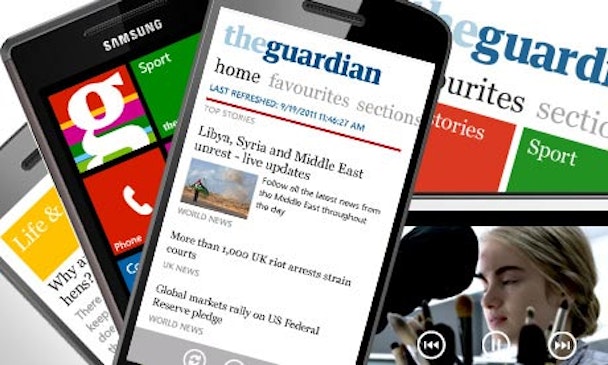The Guardian eyes future online growth from apps to combat rise of ‘off-platform’ consumption
If the last five years were about adapting its business to mobile, the next two years for the Guardian will focus on apps.

The shift is in response to people increasingly reading their news “off-platform” through products like Facebook Instant Articles and Google Accelerated Mobile Pages. The distribution opportunity the likes of Facebook and Google offer is enormous though the lack of control they give publishers in exchange for that reach is deemed too high a cost by some.
“If we really care about owning the relationship with the reader and providing the best experience the place to do that at moment is in the app,” said the Guardian’s group project manager for mobile and devices Tom Grinsted at the Leaders Innovation conference yesterday (15 January). He went on to add that on average “less than 25 per cent of time spent on mobile is in a browser” so it “makes sense to focus on apps”.
While the likes of Facebook and Google are making more concerted efforts to get media owners on-side, whether it’s through favourable terms on ad sales or allowing them to sell it as a premium product, the products ultimately mean more people are reading publishers’ stories but not on their sites. It’s a conundrum flummoxing many media owners the emergence of apps is seen as a potential way to make them less reliant on off-platform traffic
“If you look at our traffic from the mobile web then there’s a fairly big chunk of it coming from Google but their Accelerated Mobile Pages means that all those posts are likely to be served on Google’s own product. All that traffic then coming from the mobile web will likely be off platform”, added Grinsted.
Moving away from this then can only happen because publishers have gained control of the product at the same time as they’ve lost more control over distribution. There’s more onus on publishers to leverage their brands in order to stand out, a change News UK’s chief marketing officer Chris Duncan admitted was dependent on “curation”.
“Search disrupted the [print model] with a focus on articles, then social disrupted that with more of an aggregator approach and what we’re seeing now with apps – certainly with the Times app – is us thinking about how do we get people to read content in the way that we curate it,” he continued on the same panel. The point being that at a time where media has never been so democratised, curation is seen as a way to build the value and authority needed to win readers.
“We have an expert team of people scouring the world everyday who will be thinking now about what tomorrow’s Times is going to look at. We really want you to read that in the way that we curate it and apps allow you to do that.”
It’s a view shared by Conde Nast, which is transitioning from being a magazine publisher to being a media one. It means not necessarily prioritising scale and instead finding those valuable audiences in small niches it can then sell to advertisers as premium. Part of this premium will be built into its native ad offering, which is set to be a big focus for the publisher in 2016 as it looks to pivot it titles around fresh monetisation strategies.
“We’re not just news providers,” said Wil Harris, head of digital at Conde Nast Britain during the session. “We provide different types of content. The challenge here is finding the right content for the right person at the right time….not just through news but other things like recipes or sports for example. It’s about moving us closer to the things that actually matter."

